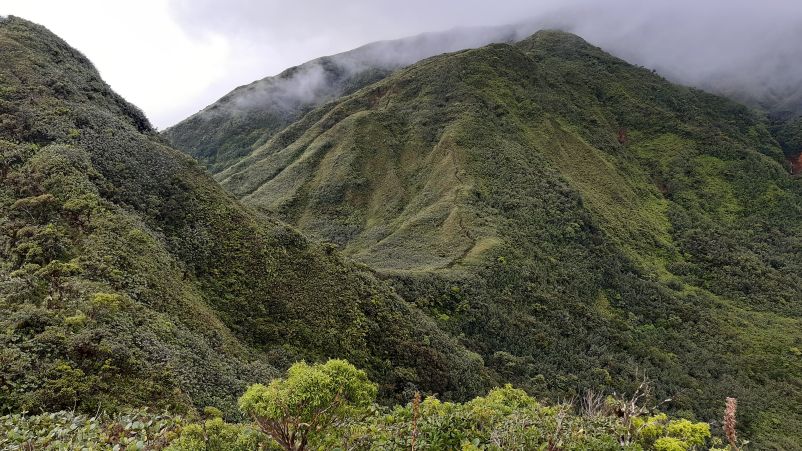
Grande Découverte
16 points of interest
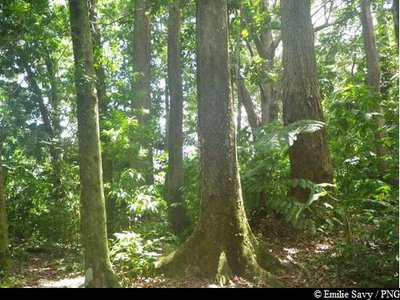
plantation d'Eucalyptus - Emilie Savy / PNG  Flora
FloraEucalyptus
Members of the Myrtaceae family, Eucalyptus trees were originally imported from Australia. They prosper in moist and acidic soil. The bark comes off in patches and the tree exudes a resinous gum when damaged.
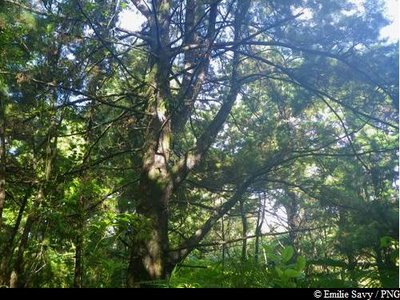
Cyprès - Emilie Savy / PNG  Flora
FloraCyprus trees
The cypress tree belongs to the Cupressaceae family. With an easily recognisable smell, this tree was introduced to Guadeloupe as an ornamental species.
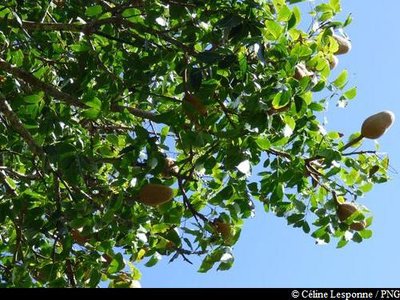
 Flora
FloraWest Indian Mahogany
The West Indian Mahogany (Swietennia macrophylla) belongs to the Meliaceae family. It is a perennial tree with a large, upright, cylindrical bole and small, yellow-green flowers. This species - highly prized by woodworkers on account of its hardness and colouration - was introduced for the purposes of producing timber, leading to the tree being overexploited in its area of origin. It is listed in Appendix II of the threatened species covered by the Washington Convention.
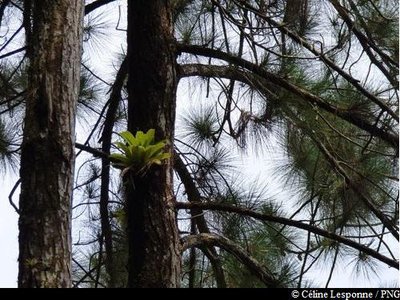
PNG  Flora
FloraCaribbean pine
The Caribbean pine (Pinus caribeae) is a member of the Pinaceae family. Now considered an invasive species in Guadeloupe, this tree was introduced so that its wood could be used as timber. It has noticeably cracked, reddish-brown bark, while the inner bark is highly resinous. It has a slender top which is shaped like a rounded pyramid.
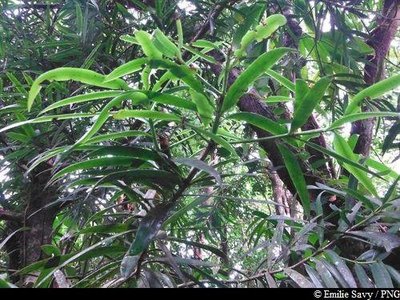
E.Savy - PNG  Flora
FloraThe Yucca Plum Pine
A member of the Podocarpaceae family, the Yucca Plum Pine (Podocarpus coriaceus) is also known locally as the "Wood rose". Closely related to conifers, it is an average-sized tree, with leathery leaves that are dark green on top and similar to an oleander's. Its brown-coloured seeds in their floral buds are particularly eye-catching. It has a thin layer of bark. This species flowers mainly in December/January, with inconspicuous flowers.
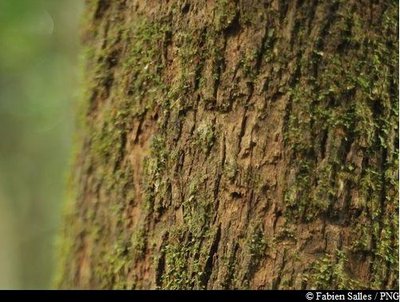
Bois bandé (détail écorce) - Fabien Salles / PNG  Flora
Flora"Bwa bandé"
Richeria grandis belongs to the Phyllanthaceae family. It is a large variety, distinctive for its tough leaves and reddish-brown bark that so often falls victim to rogue extraction. Also known as bwa bandé in Créole, it is renowned for its aphrodisiac qualities. Its wood is used as timber or in carpentry. It has very distinctive, green, grape-like fruits which form small pods and form copiously on its branches.
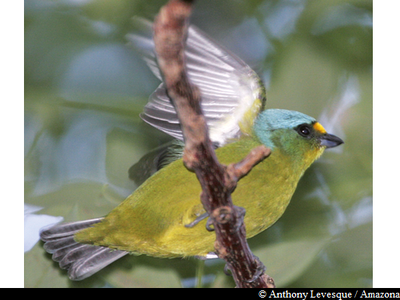
Organiste Louis D'Or - Anthony Levesque / Amazona  Fauna
FaunaAntillean euphonia
The Antillean euphonia (Euphonia musica) is also known as Douvan nwèl in Creole. The bird is distinctive for its bright blue crown and neck, while its cheeks are a darker shade of blue/green. It has a bright yellow breast and chin. Its back is olive and green, while its belly is yellow/green. This sedentary nesting bird is not very common in Guadeloupe, but it is found in the rainforest at medium altitude. It is on the IUCN Red List and is one of the species on to make the list of nesting birds in Guadeloupe.
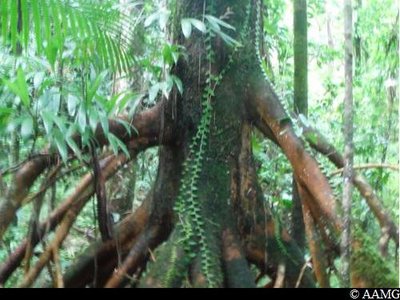
Patétuvier jaune - AAMG  Flora
FloraCandlewood
Symphonia globulifera, also commonly known as the chewstick tree, belongs to the Clusiaceae family. The tree grows in thick, humid and swampy forests. Reaching up to 25-30 metres in height, it has stilt roots and a yellow latex trunk. Its flowers are formed of bright red petals, while its fruits resemble nutmeg, are oval in shape and yellow when ripe. It wood was one used as timber for houses and resin for boats.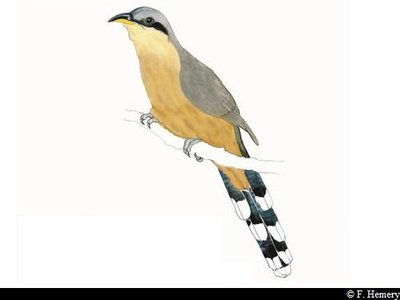
"Coucou manioc" - F. Hemery  Fauna
FaunaMangrove cuckoo
The Mangrove cuckoo (coccyzus minor) is also known as the Coucou Manioc in Creole. It is recognisable for its black patch over one eye, for its long, layered tail and for its beak, which curves downwards. It measures between 28-31 cm.
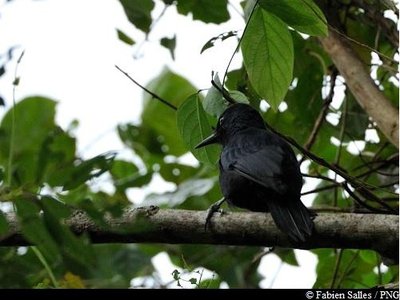
Pic de la Guadeloupe - Fabien Salles / PNG  Fauna
FaunaGuadeloupe woodpecker
The only endemic bird species to the country, the Guadeloupe woodpecker measures 26-28 cm. Its beak is long and slender and, in the male, is longer than the head, unlike in females. It is adorned with black plumage, has a blood-red throat and belly and blue/black back. It can be seen quite frequently on tree trunks, which it hammers into with its powerful beak (hence its Creole name of "Toto bwa"). It moves over short distances in rippling, gliding movements. The Guadeloupe woodpecker is included on the list of endangered species.
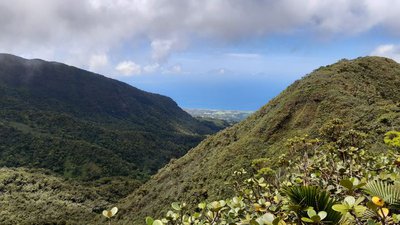
vue depuis les crêtes - C.Lesponne - PNG  Viewpoint
ViewpointThe ridge and the summit
The ridge and summit of the Grande Découverte offers stunning views towards the south (Nez Cassé, La Soufrière) and the southwest (Saint-Claude, "Papaye", Baillif and Basse-Terre).
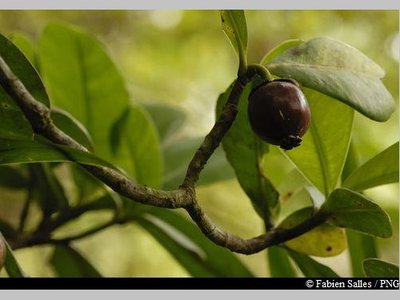
Clusia mangle - Fabien Salles / PNG  Flora
FloraClusia mangle
Clusia mangle is a member of the Clusiaceae family. It is endemic to the Lesser Antilles, where it is found above 800 metres above sea level, where winds are often fierce and humidity is constant. It is a shrub with leathery, fleshy and shiny leaves. Its fruits, which are between 1-2 centimetres, are similar to big yellow/green olives.

Le Camp Maréchal - Emilie Savy / PNG  Geology
GeologyMorne du Col
Heading south, views of la Grande Faille de la Soufrière and le Morne Amic. Le Camp Maréchal is located in a caldeira, formed during a volcanic eruption. Towards the northeast, overlooking la Montagne de la Capesterre.
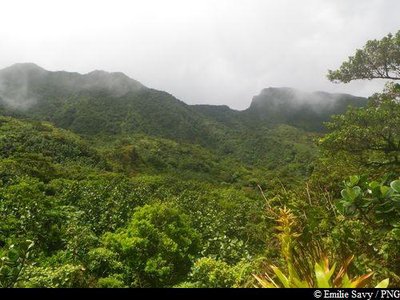
vue sur le Nez Cassé - Emilie Savy / PNG  Viewpoint
ViewpointLe Nez Cassé
Views of le Nez Cassé, summit located to the west of la Soufrière.

fruit du Palétuvier jaune - PNG  Flora
FloraSymphonia globulifera
Symphonia globulifera, also commonly known as the chewstick tree, belongs to the Clusiaceae family. The tree grows in thick, humid and swampy forests. Reaching up to 25-30 metres in height, it has stilt roots and a yellow latex trunk. Its flowers are formed of bright red petals, while its fruits resemble nutmeg, are oval in shape and yellow when ripe. It wood was one used as timber for houses and resin for boats.
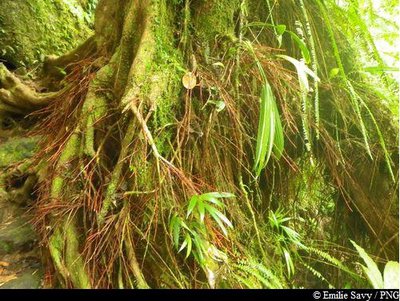
Bois rouge carapate - Emilie Savy / PNG  Flora
FloraAmanoa caribeae
Amanoa caribeae belongs to the Euphorbiaceae family. This species is endemic to the Lesser Antilles.
It is a large tree with a trunk that rests straight on its buttresses, depending on the terrain. The most distinctive features of this species are its reddish bark and roots at the foot of the trunk. Its leaves vary in shape: sometimes they are whole, sometimes pointed. Its flowers form small clusters. The hard wood of this tree was used as timber or in carpentry.
Description
Hiking trail colour: yellow
Take the trail that leads up to the left of the information board. The path begins with a steady climb among the tall trees of the rainforest. Cross the Madame François ravine. Turn right at the intersection. Cross the ravine once more. Keep going on the same path. At the next intersection, go straight ahead towards "Grande Découverte par la Vigie" (the path on the right leads to the Bains Chauds du Matouba).
Turn left towards "Grande Découverte par la Vigie", "Sarcelle" and "Merwart". The climb gets steeper here and the path is narrower. You reach la Vigie at the next intersection. Then turn right towards "Grande Découverte" and then "Soufrière par Carmichäel".
The trail crosses the ridge and reaches the summit of the Grande Découverte, offering some spectacular views. The descent is initially steep, with views of the Carmichäel trail opposite. Turn right at the intersection towards "Matouba". The trail is noticeably rocky. Keep going and return to the parking area at the start.
- Departure : Matouba forest house, Saint-Claude
- Arrival : Matouba forest house, Saint-Claude
- Towns crossed : Saint-Claude and Capesterre-Belle-Eau
Altimetric profile
Recommandations
As Guadeloupe is prone to natural risks, extra care should be taken in this natural environment. For the benefit of all hikers, responsible behaviour is very important.
Warning : the parking area is unsupervised.
Information desks
Headquarters of the National Park of Guadeloupe
Montéran, 97120 Saint-Claude
The reception and shop are open to the public :
- Monday, Tuesday and Thursday : 8 am to 12.30 pm and 2 pm to 5 pm.
- Wednesday : from 8 am to 1 pm.
- Friday : 8 am to 12.30 pm.
Services : reception, shop, toilets, free parking. Building accessible to people with reduced mobility.
Localisation GPS : Lat: 16,01634 N - Lng: 61,70753 W.
Access and parking
GPS coordinates of the start point : Lat : 16,04668 N - Long : 61,69177 W.
In the village of Saint-Claude, go past the Post Office and take a left onto Avenue du Maréchal Foch. Then go past the Tourism Office and City Hall. At the stop before the church, turn right on Route RN3 which goes towards Matouba. Go past three bridges and the picnic area of the Rivière Rouge. Then keep going until you reach the top of the hill. A sign showing the way for Matouba will direct you to the parking area on the right-hand side of the road, before the Maison Forestière (run by the National Forestry Office).
Parking :
Source
Report a problem or an error
If you have found an error on this page or if you have noticed any problems during your hike, please report them to us here:

